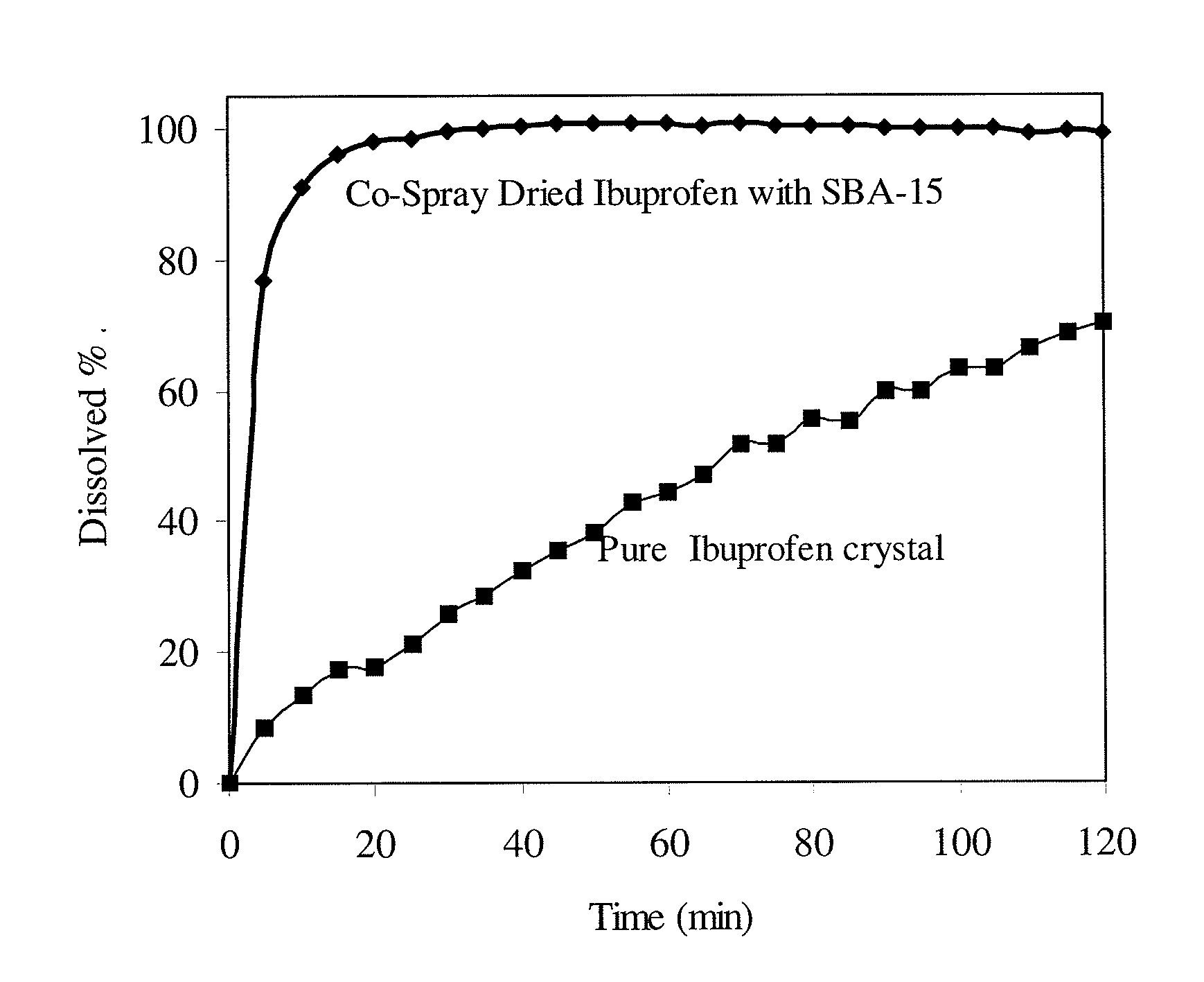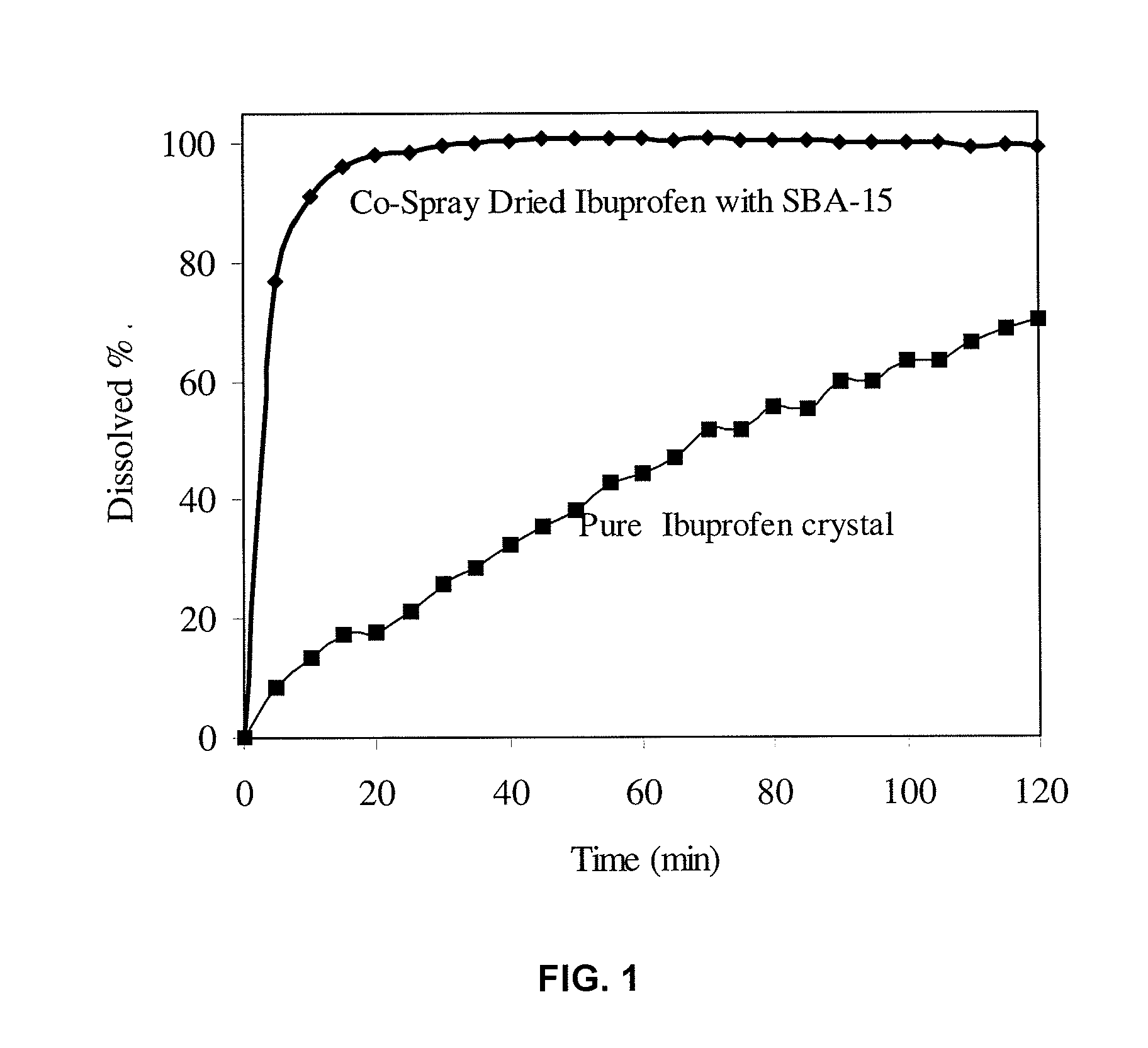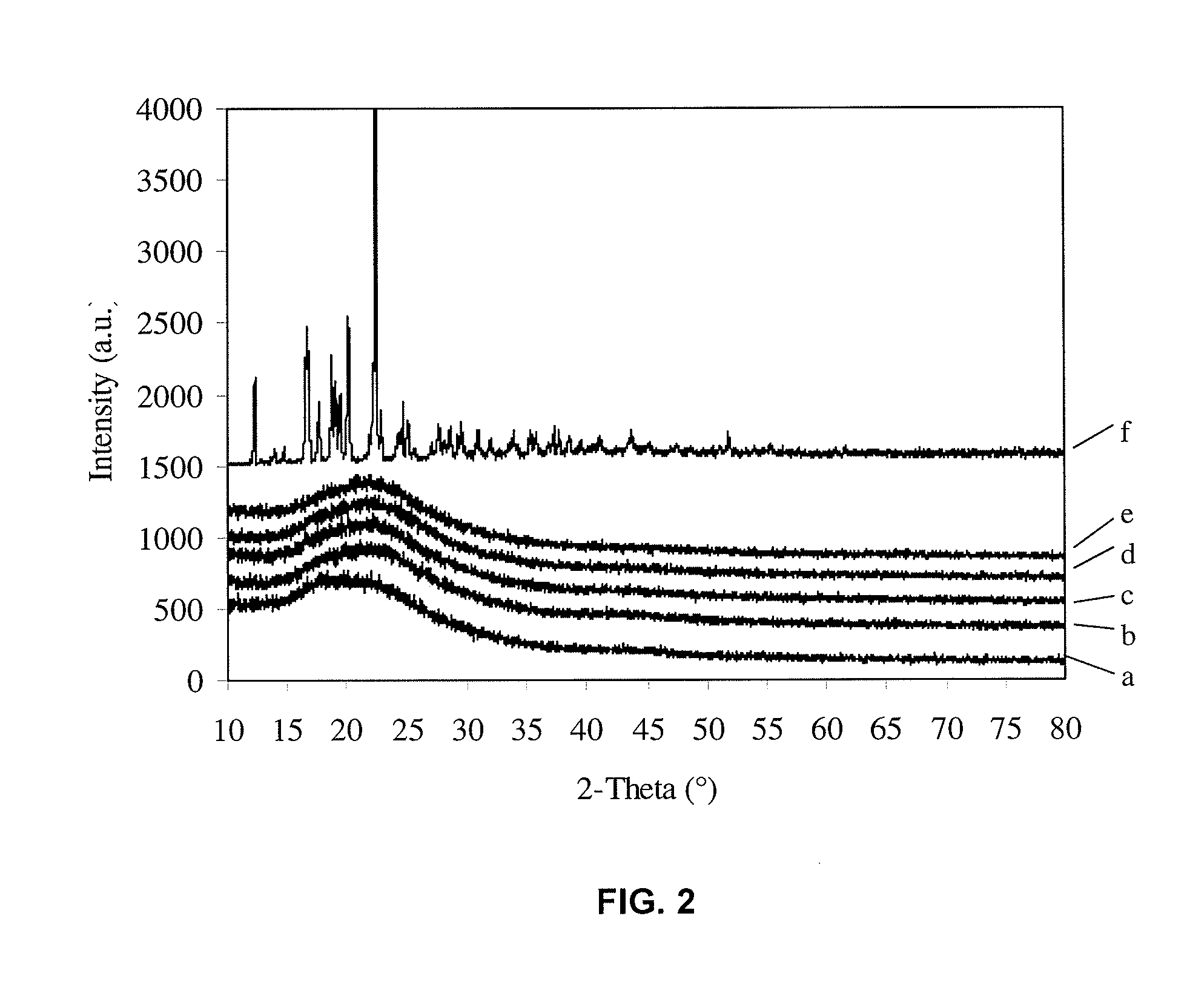Mesoporous material excipients for poorly aqueous soluble ingredients
a technology of mesoporous materials and organic ingredients, applied in the direction of inorganic non-active ingredients, pharmaceutical product form changes, metabolic disorders, etc., can solve the problems of poor solubility of active pharmaceutical ingredients (apis) in water, many nces fail to be commercialized, and many nces cannot be easily scaled for commercial production, so as to improve the dissolution rate of poorly water-soluble active compounds , the effect of easy scaling
- Summary
- Abstract
- Description
- Claims
- Application Information
AI Technical Summary
Benefits of technology
Problems solved by technology
Method used
Image
Examples
example 1
[0102]1.0 g of Ibuprofen and 1.0 g of submicron mesoporous silica materials were dispersed in 100 mL ethanol under stirring overnight. The suspension was spray-dried in a Buchi Spray Drier B290. The inlet temperature was set to 81° C. and the outlet temperature was ˜50° C. The pump speed was set to “20”. Dissolution condition: 50 mg spray-dried ibuprofen with SBA-15 and 25 mg of pure ibuprofen (Sigma) crystal were used for dissolution testing in 900 mL 0.1N HCl at 37° C. Stirring speed is 100 rpm. Sample was taken by auto sampling system at interval of 5 min. UV reading was taken at wavelength 222 nm.
[0103]As indicated in FIG. 1, the dissolution rate of spray-dried ibuprofen is significantly enhanced, as compared with a commercial ibuprofen in crystalline form (Sigma). In 15 min, 95.6% of spray-dried ibuprofen with SBA-15 is dissolved, whereas only 17.5% of pure ibuprofen crystal is dissolved. The dissolution profile was measured using VK7010 (Varian Co) USP dissolution tester with ...
example 2
[0108]Ibuprofen is co-spray-dried with SBA-15 submicron particles using the same procedures as Example 1. To evaluate the dissolution rates in the tablet form, 50 mg of ibuprofen spray-dried with SBA-15 (50:50 wt) is mixed with 0.8 g of cornstarch and pressed in a die with diameter of 13 mm at press of 1 ton. A control sample of 25-mg ibuprofen in the crystalline form (commercial) is tableted with cornstarch with the same procedure. The dissolution is performed using the same method as in Example 1. The tablet form dissolution profile as illustrated in FIG. 8 is similar to that observed in the powder form. 87.9% of the spray-dried ibuprofen in the tablet form dissolves within 15 min as compared to only 16.4% of ibuprofen dissolved in the crystalline form.
example 3
[0109]FIG. 9 illustrates the dissolution of the spray-dried ibuprofen at drug loading ratios of 25% and 75%. The sample exhibits very high dissolution rate when the formulation contains 25% of ibuprofen and 75% of SBA-15: 97.1% of active ingredient is dissolved in 15 min. When the formulation contains 75% of ibuprofen and 25% of SBA-15, the dissolution reaches 68.9% in 15 min, which is much higher than commercial pure ibuprofen in the crystalline form although it is slightly delayed as compared to the samples with lower drug loadings. The pore volume is not enough to host ibuprofen in solid dispersion with high drug loading of 75%, and the remaining ibuprofen forms crystalline particles outside the mesoporous matrix. The partially crystallized ibuprofen can be detected by XRD as shown in FIG. 10.
PUM
| Property | Measurement | Unit |
|---|---|---|
| solubility | aaaaa | aaaaa |
| solubility | aaaaa | aaaaa |
| particle size | aaaaa | aaaaa |
Abstract
Description
Claims
Application Information
 Login to View More
Login to View More - R&D
- Intellectual Property
- Life Sciences
- Materials
- Tech Scout
- Unparalleled Data Quality
- Higher Quality Content
- 60% Fewer Hallucinations
Browse by: Latest US Patents, China's latest patents, Technical Efficacy Thesaurus, Application Domain, Technology Topic, Popular Technical Reports.
© 2025 PatSnap. All rights reserved.Legal|Privacy policy|Modern Slavery Act Transparency Statement|Sitemap|About US| Contact US: help@patsnap.com



